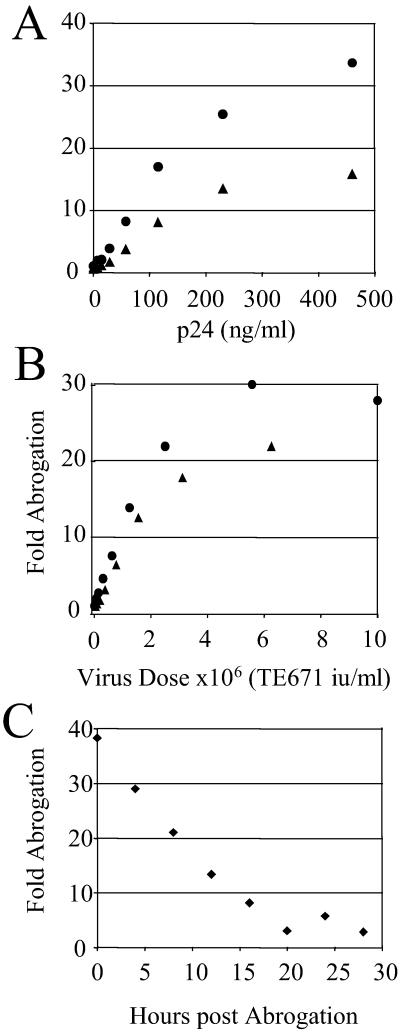Figure 3.
Abrogation by reverse transcriptase mutant and time course of abrogation decay. OMK (●) or FRhK4 (▴) cells (105) were exposed to serial dilutions of reverse transcriptase-defective HIV-eGFP D185E (A) or wild-type HIV-puro (B) for 4 h. Cells were washed and exposed to 105 TE671 i.u. of HIV-eGFP. Percentage infection was measured by analysis of eGFP expression 48 h later by FACS. Fold abrogation is calculated by dividing the increased percentage infection after abrogation by unabrogated control HIV-eGFP infection. About 1% of unabrogated controls typically were infected. p24 concentrations of wild-type and mutant supernatants were similar with around 500 ng/ml corresponding to a titer of 107 TE671 i.u. wild-type HIV-puro. OMK cells (105) were exposed to 107 TE671 i.u. of HIV-puro for 4 h, washed, and exposed to 105 TE671 i.u. of HIV-eGFP at 4-h intervals (C). Percentage infection and fold abrogation were determined as above. Data are representative of two independent experiments.

